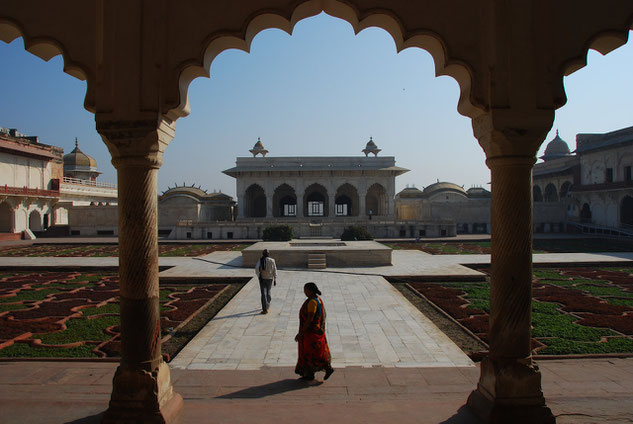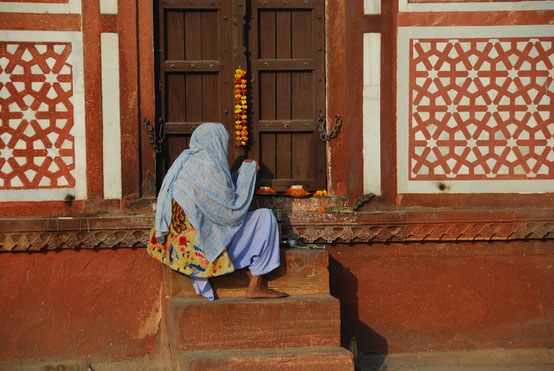India 2014 - Agra
Taj Mahal

The most beautiful building of the world.
"A teardrop on the cheek of eternity." (Rabindranath Tagore)
"The embodiment of all things pure." (Rudyard Kipling)
Mausoleum of Mumtaz Mahal, third and favourite wife to Mughal emperor Shah Jahan.
Mumtaz Mahal died 1631 giving birth to her 14th child. 1632 Shah Jahan commissioned the complex, that also comprises a vast 42acre mughal style garden and other buildings. Work on the mausoleum was completed 1643 and the whole complex in 1653. The main chamber contains the fake tombs of Mumtaz Mahal and Shah Jahan. The real graves are in a chamber under the mausoleum and not open to the public. Inside the main chamber, the marble screens and pietra dura (marble inlayed with semiprecious stones) are unmatched in the world - photography is prohibited inside the building.
In the project 20.000 artisans were employed and the costs are estimated to around US$800billion worth today.
Aurangzeb, son of Shah Jahan, took over power in 1658 and imprisoned his father in Agra Fort in full view of the Taj Mahal until his death 1666.
Agra Fort

Besides the Taj Mahal Agra Fort is the second World heritage site in Agra - Fatehpur Sikri is the third 37km west of Agra.
Akbar started construction of a garrison in Agra in 1565, though at that place a small fort from the 11th century already existed. It had been used by the Lodi Dynasti that ruled the Delhi Sultanate from 1451 to 1526 as a second capital next to Delhi.
Emperor Humayun was crowned in the fort in 1530.
When Akbar took over the fort it was made of brick and in a poor state. Within 8 years Akbar rebuild the fort with red sandstone.
Shah Jahan added to the fort and transformed parts of it into a palace. The fort played an important role in India's First War of Independence 1857 - then under British control. Even today parts of the fort are used by the military and closed to the public.
Aurangzeb imprisoned his father Shah Jahan in 1658 in Agra Fort - in view of the Taj Mahal.
Itimad-ud-Daulagh

Itimad-ud-Daulagh is the name of the mausoleum of the grandfather of Mumtaz Mahal, Mizra Ghiyas Beg, who was the chief minister (wazir) of emperor Jehangir (the predecessor of Akbar, reign 1605 - 1627).
The daughter of Mizra Ghiyas Beg, Nur Jahan, was maried to Jehangir and later built this tomb after the death of her father 1622-1628.
Some call it the baby Taj. In fact it was the first building of this kind - made of white marble, with marvellous marble lattice screens inside and extensive use of pietra dura. As the Taj Mahal it is located at the banks of the Yamuna river.






























































